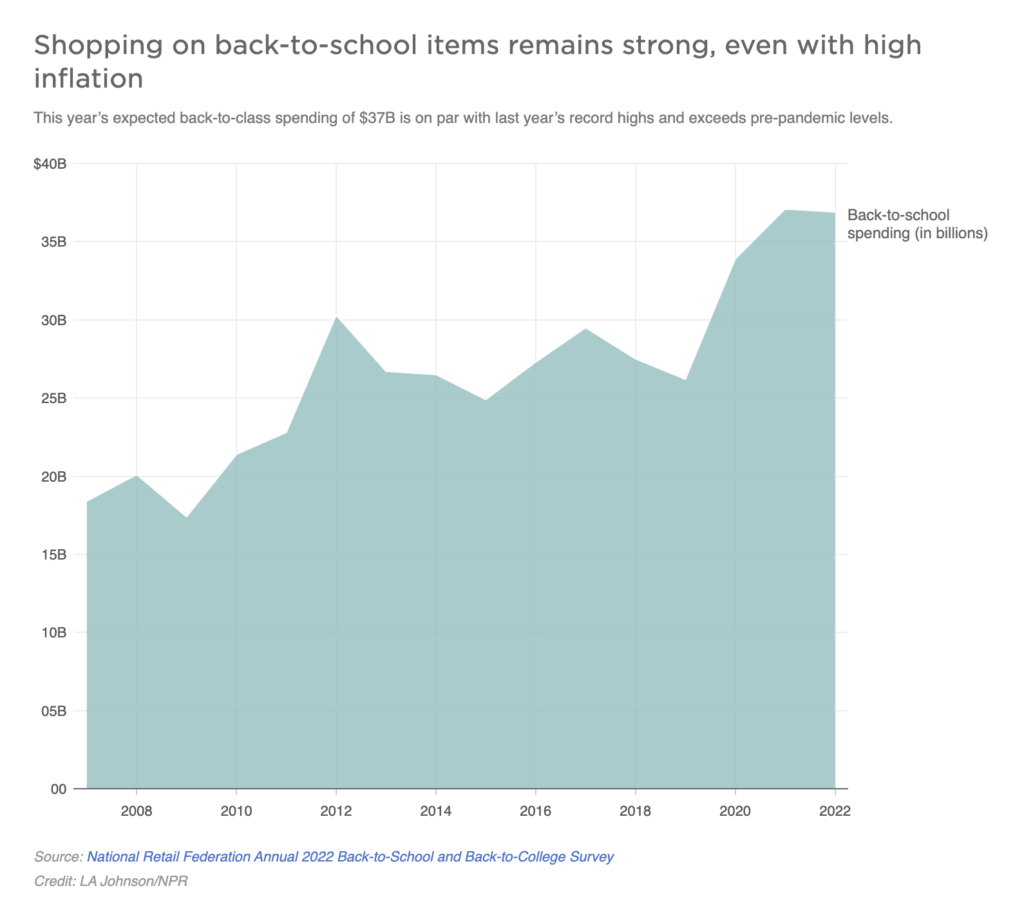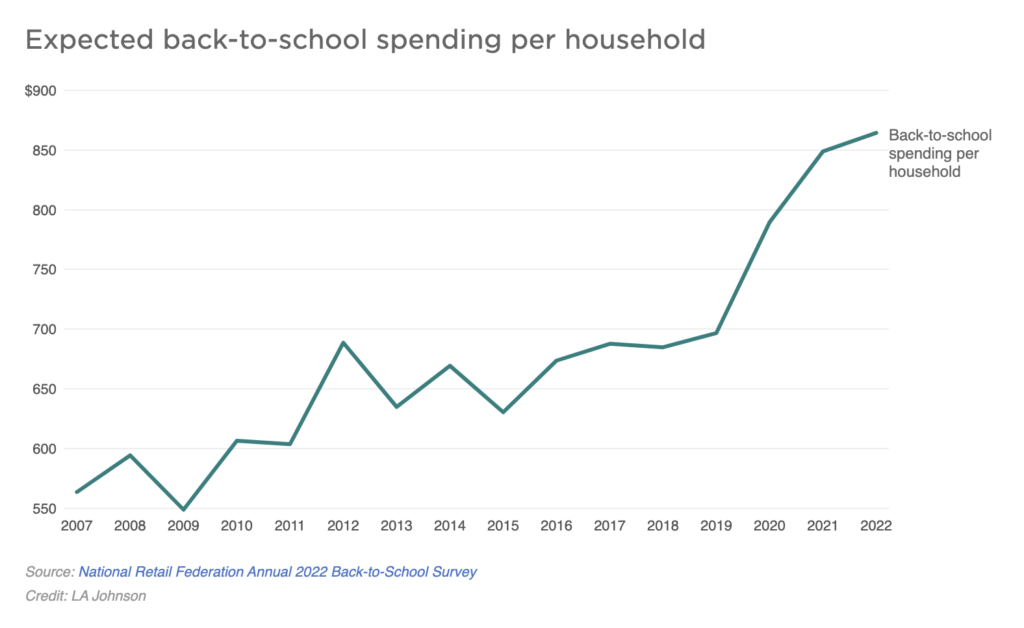Binders, backpacks… and inflation are on this year’s back-to-school shopping list

People shop for school supplies at a Target store in Miami, Fla., on July 27. (Marta Lavandier/AP)
Back-to-school shopping for her three children, Stephanie Maddox recently picked up a bottle of hand sanitizer and noticed it was more expensive than she remembered. Then, she looked at binders, finding fewer options, all with higher price tags.
“My budget is bigger this year … but it seems like it doesn’t matter much,” says Maddox, from Alabama. Deals feel less like deals, she says, and more like normal prices she used to see.
That is exactly how inflation works: spending more but not getting more. After months of worrying about the pandemic, shoppers now say higher prices are their top concern — right as back-to-school season began.
Spending on school clothes and supplies this year is on track to match last year’s record of $37 billion, according to the National Retail Federation. The group estimates that families with school children will spend an average of $864, or $15 more than last year.
Inflation being at a 40-year high is a key driver of this year’s near-record spending, says Keisha Virtue, senior retail research analyst at JLL who surveyed back-to-school shoppers. Almost half the parents in JLL’s survey said they expected to buy fewer products this year, planning to focus on necessities — because of inflation.

The NRF’s survey also found more families saying they plan to skip travel or dip into savings to pay for back-to-school supplies. More parents than before said they plan to reuse supplies they already have.
Generally speaking, American shoppers are still spending a lot on back-to-school supplies — certainly more than before the pandemic. Broadly, wages have been rising, unemployment remains low, people’s savings levels are relatively healthy. But financial anxiety is now a common part of the experience.

“I just feel for the first time maybe in my entire experience of being a mom, that I’m pausing on buying kind of more basic things that I used to not even think twice about,” says Mary Rynsburger, a teacher from Michigan who has triplets going to 10th grade and another daughter starting senior year.
When it comes to food, hardest-hit by inflation, she still get her usual fare, but might skip things that no longer seem worth it, like soft drinks or chips. “I just don’t think I’ll enjoy those Doritos, knowing they cost more,” she says, with a laugh.
Brands and retailers say they have noticed people begin to change how they shop: more likely to choose store brands or wait out deals. Walmart — the top U.S. destination for back-to-school shopping — says it has had to keep lowering prices for clothes and other non-necessities to get people beyond the food aisles.
In interviews, parents say they’re looking forward the normal routines of the school year, eager to leave pandemic-era virtual school in the rear view mirror. But of course, that also means budgeting for the extras that entails — long after back-to-school shopping is done.
“It’ll be fees for costumes, fees for musical instruments, field trips — none of these things would have existed last year,” says Katya Banta from Texas, whose children start 4th and 9th grade. “So, yes, this year I’m expecting to pay more. But I’m also back to work, we were working as many hours as we can work — that’s going to balance out as well, so I’m hopeful that it will be ok.”
9(MDAzMzI1ODY3MDEyMzkzOTE3NjIxNDg3MQ001))




